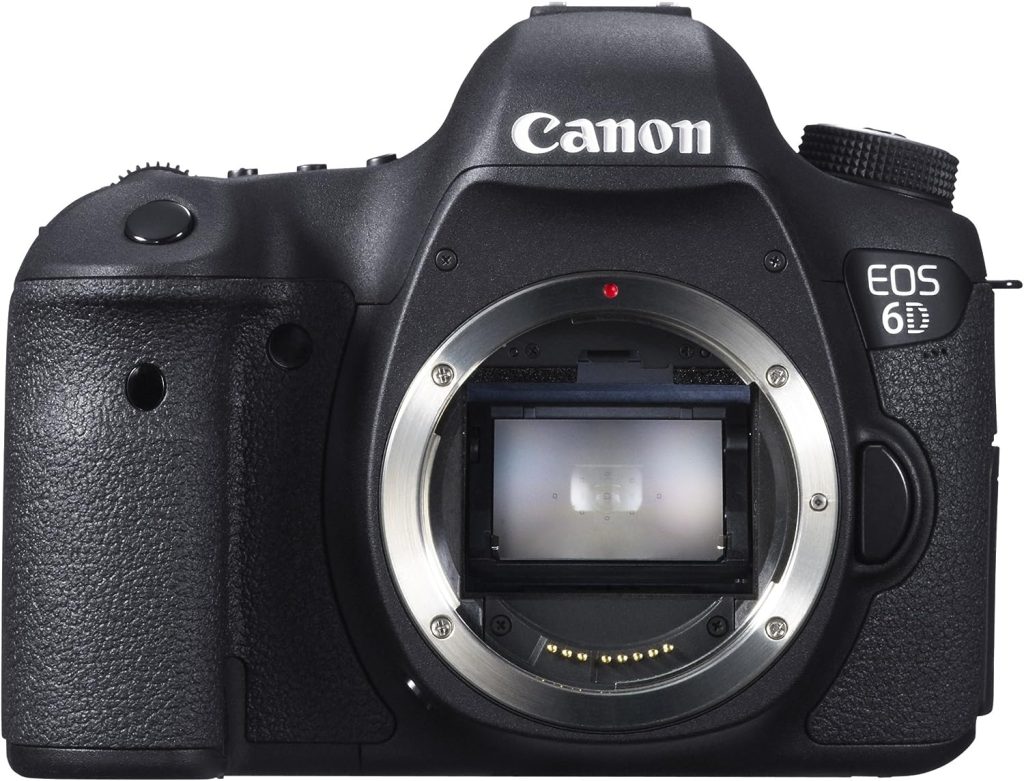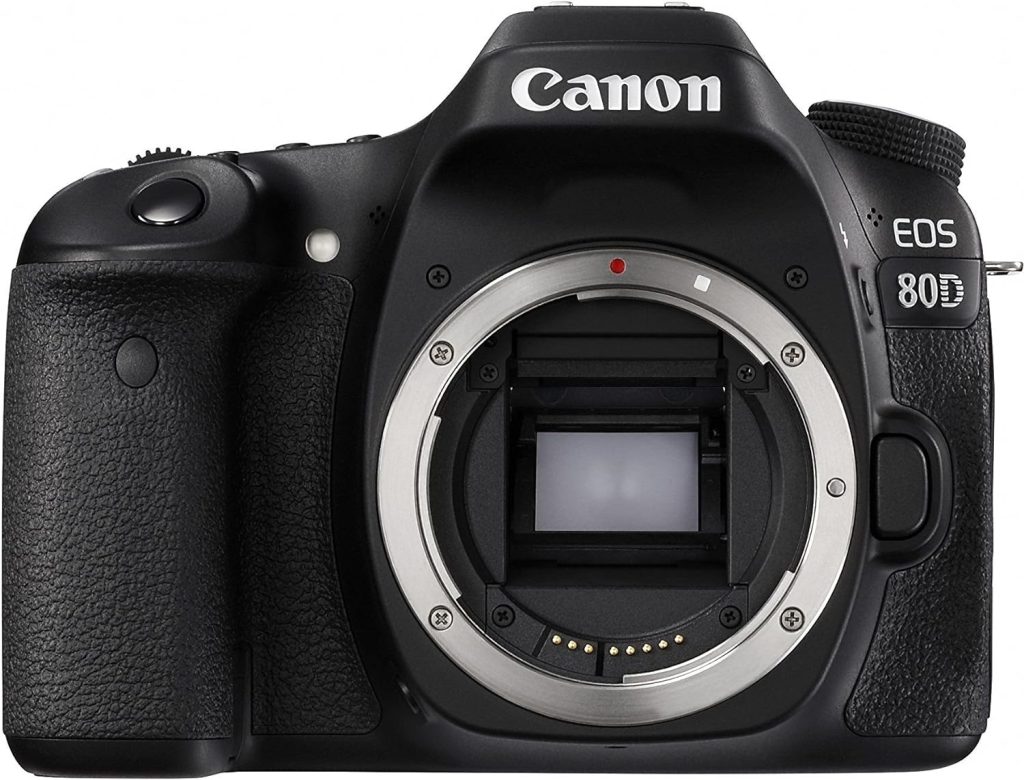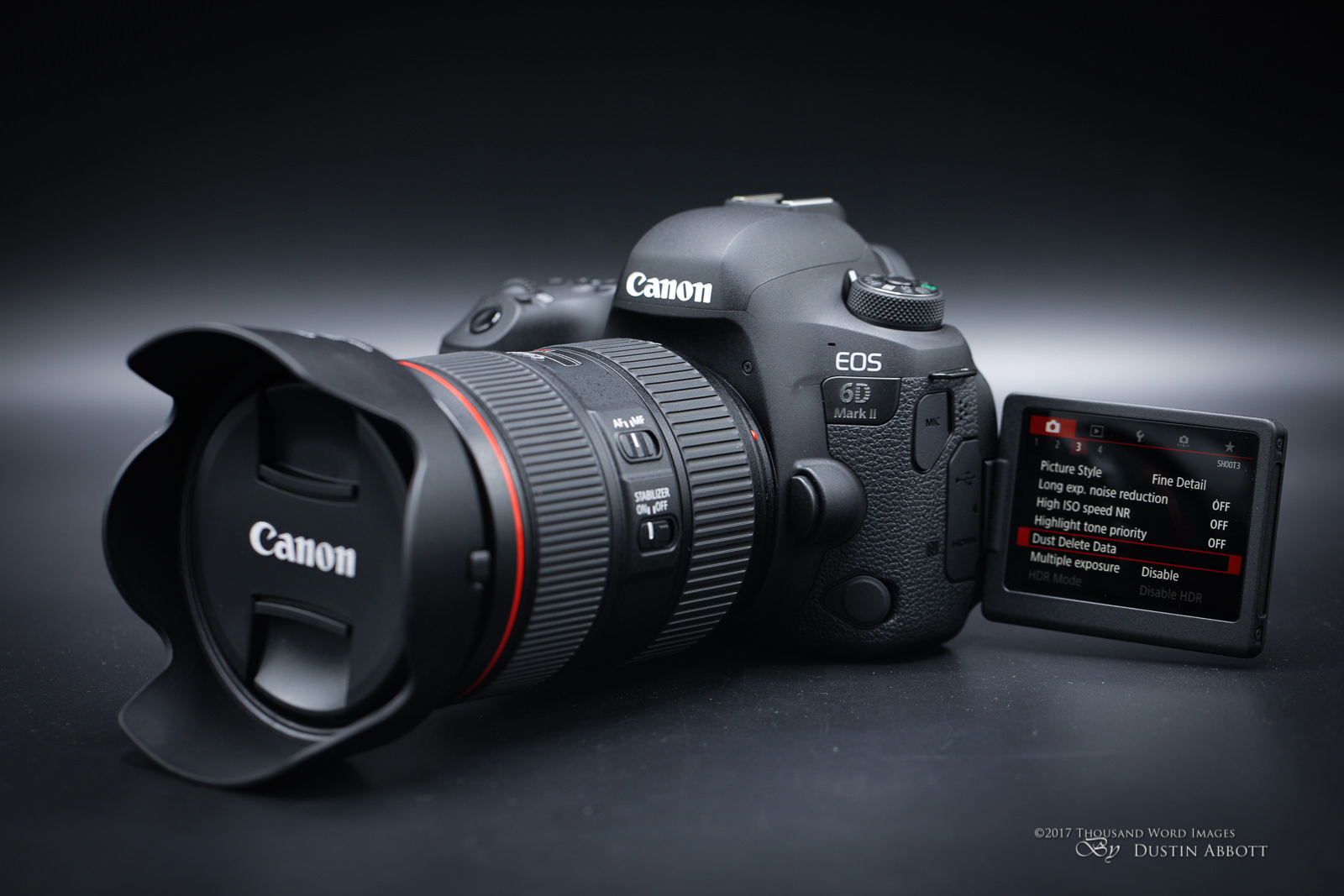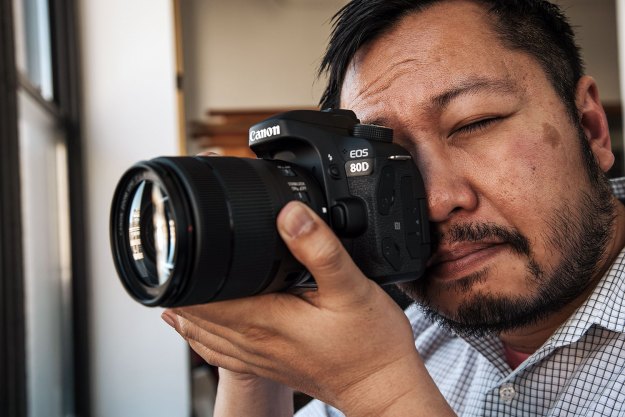Canon 6D Vs 80D: Unveiling the Ultimate Battle of Power
The Canon 6D and 80D are two popular DSLR cameras with distinct features and capabilities. In this comparison, we will break down the key differences and help you decide which model is best for your needs.
The Canon 6D is a full-frame camera known for its excellent low-light performance and advanced image quality. It is a great option for photographers who prioritize high-resolution images and superior low-light capabilities. On the other hand, the Canon 80D is an APS-C camera that offers a more versatile autofocus system and better video recording capabilities.
It is well-suited for photographers interested in fast-action photography or videography. Both cameras have their strengths and weaknesses, but ultimately your decision should be based on your specific shooting preferences and budget. Now, let’s dive into a detailed comparison of the Canon 6D and 80D to help you make an informed choice.
Table of Contents
- Canon 6D Vs 80D
- Understanding The Canon 6d And 80d
- Comparing Image Quality And Sensor Performance
- Examining Autofocus And Burst Mode
- Evaluating Low-light Performance And Iso Range
- Analyzing Video Recording Capabilities
- Comparing Ergonomics And Build Quality
- Exploring Connectivity And Battery Life
- Considering Price And Value For Money
- Deciding The Ultimate Winner
- Frequently Asked Questions Of Canon 6d Vs 80d
- Is The Canon 6d Better Than The 80d For Low Light Photography?
- Which Camera Is Better For Capturing Sports Events, The Canon 6d Or 80d?
- Does The Canon 6d Or 80d Have Better Video Capabilities?
- Is The Canon 6d Weather-sealed Like The 80d?
- Conclusion
- CallofPhotography
Canon 6D Vs 80D
Understanding The Canon 6d And 80d
The Canon 6D and 80D are two popular DSLR cameras from Canon, each with its own set of specifications and features.
| Canon 6D | Canon 80D |
|---|---|
| The Canon 6D offers a full-frame sensor, perfect for capturing high-quality images with exceptional detail. | The Canon 80D, on the other hand, features a smaller APS-C sized sensor, but still delivers impressive image quality. |
| This camera has a resolution of 20.2 megapixels, allowing for crisp and vibrant photographs. | The Canon 80D boasts a higher resolution of 24.2 megapixels, which is ideal for photographers who require larger prints or desire more flexibility in post-processing. |
| The autofocus system of the Canon 6D includes 11 focus points, ensuring accurate subject tracking and sharp focus. | With its advanced autofocus system consisting of 45 cross-type focus points, the Canon 80D excels in capturing moving subjects with precision. |
| The Canon 6D has a maximum ISO sensitivity of 25,600, allowing for low-light photography without sacrificing image quality. | The Canon 80D takes it a step further with a higher maximum ISO sensitivity of 16,000, expandable up to 25,600, ensuring excellent performance even in challenging lighting conditions. |
In summary, while the Canon 6D and 80D both offer impressive features and capabilities, their specifications vary in terms of sensor size, resolution, autofocus system, and ISO sensitivity. Depending on your specific photography needs and preferences, either of these cameras can be a great choice for capturing stunning images.
Comparing Image Quality And Sensor Performance
Image quality comparison between Canon 6D and 80D: Both Canon 6D and 80D offer impressive image quality, but they differ in terms of their sensor size and resolution. The 6D features a full-frame sensor, while the 80D has a smaller APS-C sensor. With its larger sensor, the 6D creates images with greater dynamic range, enhanced low-light performance, and shallower depth of field. It produces stunning images suitable for professional photographers and those who value exceptional image quality. On the other hand, the 80D, although having a smaller sensor, still delivers satisfying image quality. It boasts a higher resolution, which is advantageous for detailed shots and allows for greater cropping flexibility during post-processing. Whether you choose the 6D or 80D, both cameras offer solid image quality for different photography needs.
Sensor performance analysis of Canon 6D and 80D: When it comes to sensor performance, the Canon 6D and 80D exhibit impressive capabilities. The 6D, with its full-frame sensor, offers excellent low-light performance, allowing for cleaner and less noisy images even at high ISO settings. Its larger sensor size also contributes to better dynamic range, capturing a wider range of tones in a single shot. On the other hand, the 80D, with its APS-C sensor, offers fast and accurate autofocus performance, making it suitable for capturing action shots and sports events. It also boasts a higher burst rate, which enables photographers to capture multiple frames per second, ideal for fast-paced shooting scenarios. Overall, both cameras excel in sensor performance, making them reliable choices for photographers seeking high-quality imagery.

Credit : www.m.media-amazon.com
Examining Autofocus And Burst Mode
The autofocus capability is an important consideration when comparing the Canon 6D and 80D. The Canon 6D features a 11-point autofocus system with a single cross-type point in the center. This autofocus system is reliable and accurate, making it suitable for general photography purposes. On the other hand, the Canon 80D offers an upgraded 45-point autofocus system with all cross-type points. This advanced autofocus system provides improved speed and precision, which is particularly beneficial for capturing fast-moving subjects.
Burst mode performance comparison between Canon 6D and 80D:
When it comes to burst mode performance, the Canon 6D can shoot at a maximum of 4.5 frames per second (fps), which is decent for most situations. However, the Canon 80D surpasses this with a faster burst rate of 7 fps. This increased speed allows the 80D to capture a higher number of images in rapid succession, making it well-suited for sports and action photography.
Evaluating Low-light Performance And Iso Range
The low-light performance of the Canon 6D is renowned, making it a popular choice among photographers who frequently shoot in challenging lighting conditions. With its full-frame sensor and wider ISO range of 100-25600 (expandable to 50-102400), the 6D outperforms the Canon 80D in low-light situations. This camera excels at capturing detailed images with minimal noise, even at higher ISO settings. The larger pixel size of the 6D’s sensor further enhances its low-light capabilities, allowing for clearer and more vibrant shots.
On the other hand, while the Canon 80D also offers good low-light performance, it falls slightly short in comparison to the 6D. With its APS-C sensor and ISO range of 100-16000 (expandable to 25600), the 80D produces decent results in low-light conditions but may exhibit more noise at higher ISOs compared to the 6D. However, the 80D compensates for this with its advanced autofocus system and superior video capabilities, making it a versatile choice for both photography and videography.
Analyzing Video Recording Capabilities
The video recording capabilities of both the Canon 6D and 80D are worth considering when choosing a camera. The Canon 6D offers impressive video features and exceptional quality. It is equipped with Full HD video recording at 1080p, providing smooth and detailed footage. The camera also has manual exposure control, allowing users to adjust settings such as aperture, shutter speed, and ISO during video recording. Additionally, the Canon 6D offers built-in Wi-Fi and GPS, making it convenient for sharing and geotagging videos.
The Canon 80D, on the other hand, excels in video recording capabilities. It features Full HD video recording at 1080p with improved autofocus performance and enhanced color accuracy. With its Dual Pixel CMOS autofocus technology, the camera ensures smooth and precise focusing during video recording. The Canon 80D also offers a headphone jack and microphone input for better audio control. Overall, its advanced video recording features make it a great choice for videographers and vloggers.
Comparing Ergonomics And Build Quality
The Canon 6D and 80D are both popular choices for photographers looking for a reliable DSLR camera. When it comes to ergonomics, the Canon 6D offers a comfortable and sturdy grip, allowing users to hold the camera securely even for extended periods. Its strategically placed buttons and dials make adjusting settings quick and easy. On the other hand, the Canon 80D also provides a comfortable grip, but some users may find it slightly smaller in comparison to the 6D. The placement of buttons and dials on the 80D is also well thought out, ensuring efficient operation.
In terms of build quality, both cameras are well-built and durable. The Canon 6D features a magnesium alloy body, providing excellent protection against dust and moisture. This makes it a great choice for outdoor photography in harsh conditions. The Canon 80D, although not made of magnesium alloy, still has a solid build and offers good protection. Both cameras are designed to withstand daily use and provide reliable performance over time.
Exploring Connectivity And Battery Life
Connectivity options on the Canon 6D: The Canon 6D offers a range of connectivity options, including built-in Wi-Fi and GPS. With Wi-Fi, you can easily connect the camera to your smartphone or tablet for remote shooting and transferring images wirelessly. The GPS feature allows you to geotag your photos, making it easier to organize and locate your shots.
Connectivity options on the Canon 80D: Similar to the Canon 6D, the Canon 80D also has built-in Wi-Fi and NFC capabilities. This enables you to connect the camera to your compatible devices with ease and transfer images instantly. The NFC function allows for quick and seamless pairing by simply tapping the camera to your NFC-enabled device.
| Canon 6D | Canon 80D | |
|---|---|---|
| Battery Life | Approx. 1090 shots per charge | Approx. 960 shots per charge |
When it comes to battery life, the Canon 6D boasts a slightly better performance, offering approximately 1090 shots per charge compared to the Canon 80D’s 960 shots per charge. This can be beneficial, especially during long photography sessions or when traveling in remote areas where charging facilities might be limited.
In summary, both the Canon 6D and 80D offer a range of connectivity options, allowing you to easily transfer and share your images. However, if battery life is a key consideration for you, the Canon 6D offers a slightly longer-lasting power source.

Credit : www.m.media-amazon.com
Considering Price And Value For Money
Price analysis of Canon 6D: The Canon 6D was initially released with a higher price compared to the 80D. Over time, however, the price has relatively dropped, making it more affordable for consumers. Despite the reduction, the 6D is still considered a high-quality full-frame camera.
Price analysis of Canon 80D: The Canon 80D is generally more budget-friendly compared to the 6D. Its lower price point attracts a wider range of consumers who are looking for a capable DSLR. The 80D offers excellent image quality and advanced features for its price.
Assessing the value for money of both cameras: When comparing the 6D and 80D, it is important to consider their respective price points and the features they offer. The 6D, although initially pricier, provides the advantages of being a full-frame camera, which results in superior image quality and better low-light performance. On the other hand, the 80D offers a more affordable option without sacrificing much in terms of performance and versatility.
| Camera | Price | Value for Money |
|---|---|---|
| Canon 6D | Initially higher, but has reduced over time | Superior image quality and low-light performance |
| Canon 80D | More affordable | Excellent performance and features for its price |
Deciding The Ultimate Winner
The battle between the Canon 6D and 80D is a fierce one, with both cameras offering fantastic features and capabilities. When comparing the two, there are several factors that need to be considered to determine the ultimate winner.
Firstly, image quality plays a crucial role. The Canon 6D boasts a full-frame sensor, which results in superior image quality and improved low light performance. On the other hand, the 80D offers a higher resolution sensor, providing more detailed images.
Autofocus performance is another important aspect to consider. The 80D outshines the 6D with its more advanced autofocus system, featuring 45 cross-type AF points, allowing for fast and accurate tracking of moving subjects.
When it comes to video capabilities, the 80D takes the lead. It offers higher frame rates, better autofocus during video recording, and a headphone jack for audio monitoring.
Both cameras have their own strengths, and the choice ultimately depends on your specific needs and preferences. If superior image quality and low light performance are your priorities, the Canon 6D may be the better choice. However, if you require advanced autofocus and impressive video capabilities, the 80D would be the ultimate winner in your eyes.

Credit: dustinabbott.net
Frequently Asked Questions Of Canon 6d Vs 80d
Is The Canon 6d Better Than The 80d For Low Light Photography?
The Canon 6D offers superior low light performance with its full frame sensor, allowing for cleaner images with less noise at higher ISOs than the APS-C sized sensor found in the 80D. This makes it an excellent choice for photographers who frequently shoot in challenging lighting conditions.
Which Camera Is Better For Capturing Sports Events, The Canon 6d Or 80d?
The Canon 80D is generally considered better for capturing sports events due to its faster continuous shooting speed and more advanced autofocus system. With 45 cross-type autofocus points and a 7 frames per second burst rate, the 80D is capable of capturing fast-moving subjects with precision and accuracy.
Does The Canon 6d Or 80d Have Better Video Capabilities?
If video is your primary focus, the Canon 80D is the better choice. It offers full HD video recording at up to 60fps, along with a headphone jack for monitoring audio. Additionally, the 80D has a more advanced autofocus system during video recording, ensuring smooth and accurate focusing while shooting.
Is The Canon 6d Weather-sealed Like The 80d?
Yes, both the Canon 6D and 80D are weather-sealed, which means they can withstand some level of moisture and dust. This makes them suitable for shooting in challenging weather conditions, such as rain or snow. However, it’s important to note that neither camera is fully waterproof, so caution should still be taken in extreme conditions.
Conclusion
To summarize the comparison between the Canon 6D and 80D, both cameras offer remarkable features suitable for different photography needs. The Canon 6D stands out with its full-frame sensor and superior low-light capabilities, making it ideal for professional photographers. On the other hand, the 80D excels in its advanced autofocus system and versatile video shooting capabilities, making it a great choice for enthusiasts and vloggers.
Ultimately, the decision between the two depends on your specific requirements and budget.
I am a photography enthusiast turned blogger, sharing my passion and expertise on her blog, "CallofPhotography." Growing up surrounded by nature, I developed a love for capturing moments through my lens. After studying Fine Arts with a focus on photography, I launched my blog to share tutorials, gear reviews, and my own photographic work. Through engaging storytelling, I invites readers to join her visual journey, inspiring and empowering photographers of all levels worldwide.


